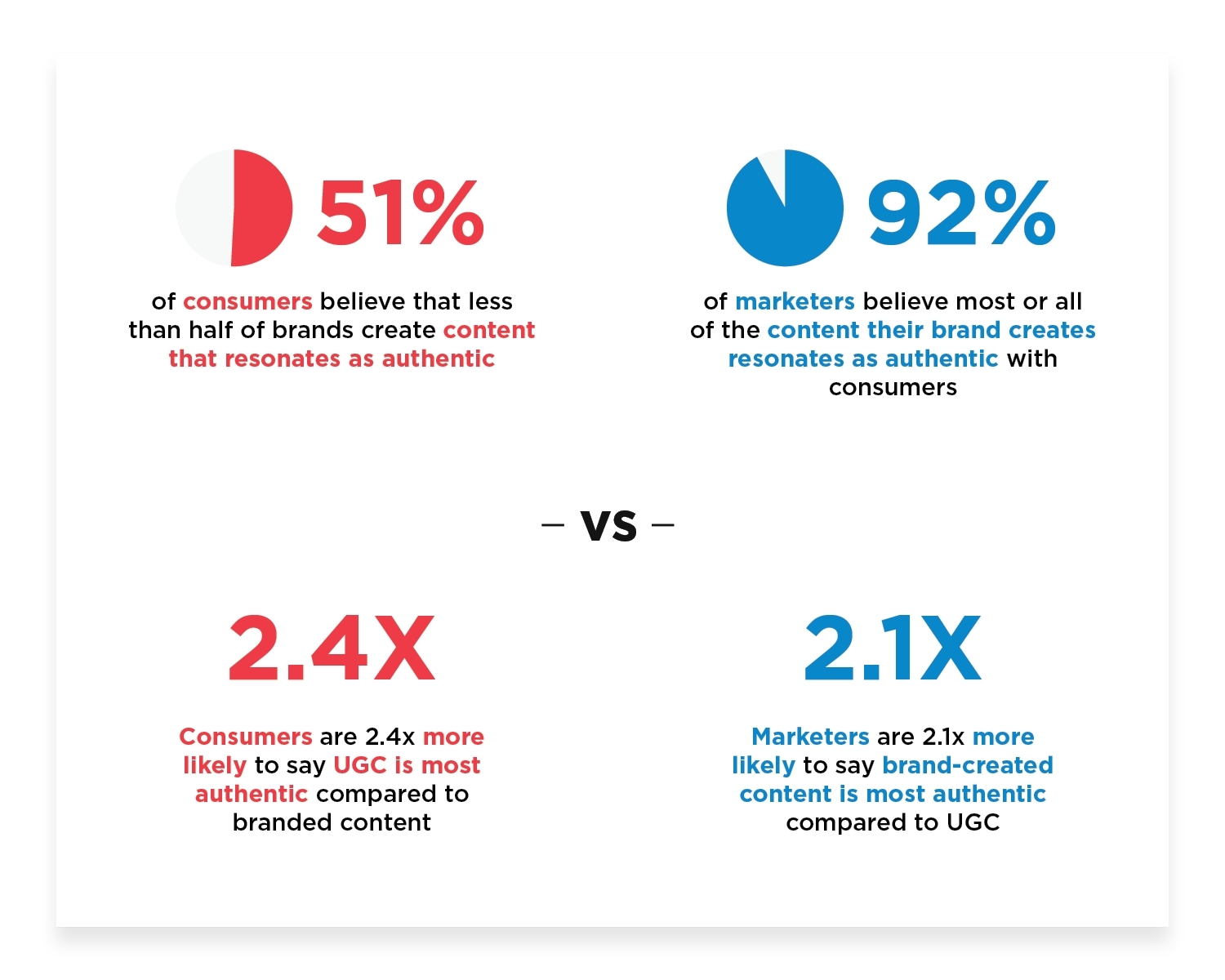92% of Marketers Believe Most or All of the Content They Create Resonates as Authentic, yet 51% of Consumers Say Less Than Half of Brands Create Content That Resonates as Authentic
Stackla, the world’s smartest visual content engine, released a new report, titled “Bridging the Gap: Consumer & Marketing Perspectives on Content in the Digital Age”. The study builds on Stackla’s 2017 consumer report, delving deeper into the types of content consumers create, reference and are influenced by across an array of buying experiences, while simultaneously exploring the viewpoint of marketers who create content experiences for consumers.

Stackla surveyed 1,590 consumers and 150 B2C marketers from the US, UK and Australia, finding that although consumers and marketers agree on the importance of authenticity and personalization, their opinions significantly diverge when it comes to which content types and sources are viewed as most authentic, influential and desired throughout the buying process.
Marketing Technology News: conDati Launches Data-Science-As-A-Service Solution Designed to Boost Online Retail Sales from Marketing Campaign Spend
Importance of authenticity is at an all-time high – 90 percent of consumers say authenticity is important when deciding which brands they like and support (up from 86 percent in 2017), and 83 percent of marketers agree saying authenticity is very important to their brands.
Consumers and marketers disagree on which content is most authentic – 61 percent of marketers believe authenticity is the most important component of effective content, yet the content they believe is most authentic—brand-created content—is not the content consumers view as most genuine. Consumers are 2.4x more likely to say user-generated content (UGC) is authentic compared to brand-created content, while marketers are 2.1x more likely to say brand-created content is authentic compared to UGC.
This disconnect helps explain why although 92 percent of marketers believe most or all of the content they create resonates as authentic, the majority of people (51 percent) say less than half of brands create content that resonates as authentic.
The influence of UGC is unmatched across industries – 79 percent of people say user-generated content highly impacts their purchasing decisions (up from 60 percent in 2017), while only 13 percent say content from a brand is impactful and a mere 8 percent say influencer-created content would highly impact their purchasing decisions.
Although consumers find UGC 9.8x more impactful than influencer content, 49 percent of marketers are planning to increase their investment in influencer marketing in 2019.
Marketing Technology News: Vestorly Integrates AI-Driven Content Curation Engine into Hootsuite to Deliver Right Content at Right Time
People expect personalization, marketers think they’re delivering – 67 percent of consumers (73 percent of Gen Z) say it’s important for brands to provide them with personalized experiences, but only 29 percent of marketers say creating personalized customer experiences is a top priority in 2019.
This lack of personalization prioritization could be a product of the fact that 92 percent of marketers believe their brands currently deliver personalized experiences, even though 14 percent of consumers disagree and another 41 percent neither agree nor disagree that the majority of brands they interact with provide personalized experiences.
Marketers feel pressure to produce more content, but aren’t investing in the content consumers seek – Marketers say their top content challenges are measuring content efficacy (60 percent), effectively managing content (57 percent) and producing or sourcing enough engaging visuals (50 percent). Additionally, 63 percent feel pressure to continually produce greater amounts of content at a higher frequency. Yet, 67 percent of marketers are planning to increase their use of brand-created photos and videos in 2019, although only 15 percent of consumers say that’s the type of content they most want to see from brands.
Consumers create the content they seek from brands – 56 percent of consumers say the types of content they most want to see from brands are user-generated photos and videos—and they’re constantly creating them. The most people say they would post about the following positive purchasing experiences: travel destination (89 percent), restaurant dining (85 percent), health and beauty product (65 percent) and new car (62 percent). Additionally, 51 percent of people say they’d be more likely to continue engaging with and/or purchasing from a brand if it shared their photo, video or post throughout its marketing.
“With the overwhelming majority of consumers now seeking, trusting, posting and acting on user-generated content, it’s clear brands can no longer simply rely on staged, stock and influencer images to break through and establish meaningful connections with today’s consumers who increasingly crave authenticity and personalization,” said Damien Mahoney, CEO & Co-Founder of Stackla.
“The abundance of freely available consumer visuals has the immense potential to lower the high costs most brands currently pay for content while also solving one of their greatest challenges: producing enough engaging visuals at a fast enough frequency.”
Marketing Technology News: Limitless Joins Forces with NewDay to Deliver Pioneering Voice of Customer Programme











